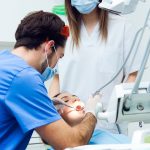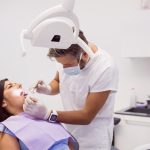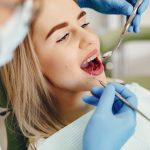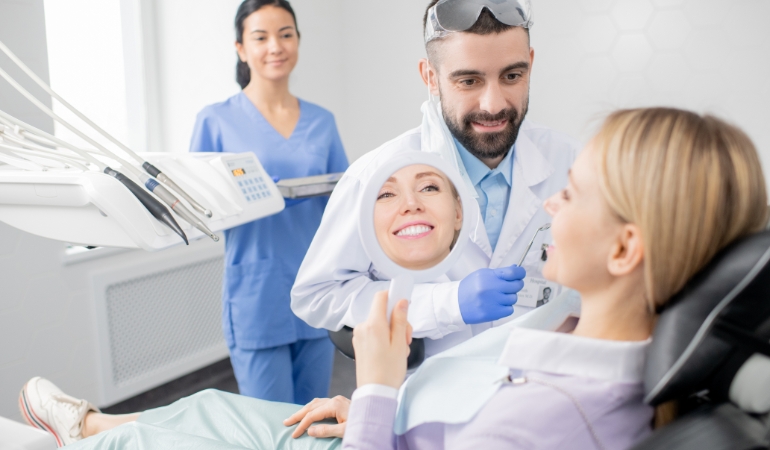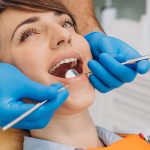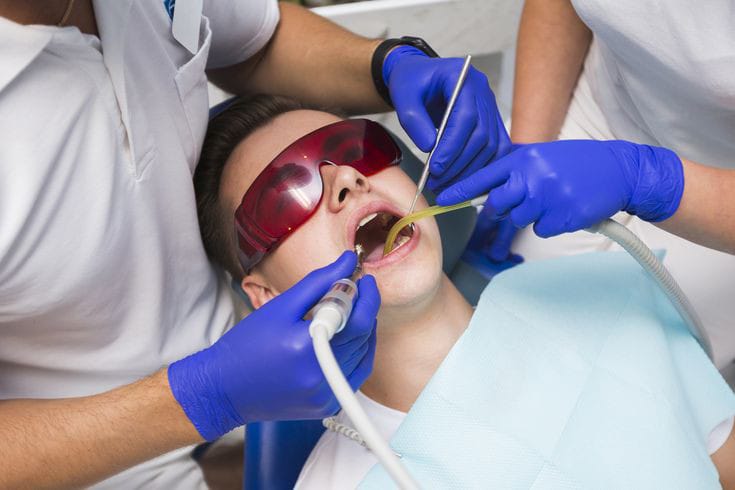
Lasers in dentistry.
Using lasers in dentistry for tooth tissue procedures and other dental conditions became common
in the 1990s.
This type of treatment may offer a range of benefits, from being more cost-effective to being less
painful than dental drills or non-laser tools.
Standing for “light amplification by the stimulated emission of radiation,” a laser creates light
energy in a very narrow and focused beam. When it hits tissue, it produces a reaction that allows
for that tissue to be removed or shaped.
Laser dentistry is used in a variety of procedures, including:
- treating hypersensitivity
- treating tooth decay
- treating gum disease
- whitening teeth
How are laser treatments performed?
The two main types of procedures used for laser dentistry are hard tissue and soft tissue
procedures. Hard tissue refers to the teeth, and soft tissue refers to the gums.
Common hard tissue procedures include:
- Cavity detection: Lasers can detect cavities early by finding evidence of tooth decay.
- Tooth preparations and dental fillings: Local anesthesia and traditional drills are often
not needed with laser treatments. Lasers can kill bacteria in a cavity, which can aid in the
long-term health of a tooth. - Treating tooth sensitivity: Teeth that are sensitive to hot and cold can be treated with
dental lasers that seal tubules on the tooth’s root.
Common soft tissue procedures include:
- Treating a “gummy smile”: Lasers are used to reshape gum tissue associated with a
“gummy smile,” in which the gums’ length covers much of the tooth. - Crown lengthening: This procedure reshapes both gum tissue and bone for healthier
tooth structure, which helps with placing restorations on the teeth. - Treating tongue frenulum attachment: People with a thick or tight frenulum may
benefit from laser frenectomy. The frenulum is the fold of skin under the front part of
your tongue that anchors it to the mouth floor. This treatment helps children whose
restricted frenulum causes them to be tongue-tied, have difficulty nursing, or have a
speech impediment. - Removing soft tissue folds: Lasers can remove soft tissue folds from ill-fitting dentures
without pain or sutures.
Other laser procedures include:
- Viewing tissues: Optical coherence tomography allows a doctor to safely see inside a
tooth or gum tissue. - Removing benign tumors: Lasers can remove tumors from the palate, gums, and sides
of the lips and cheeks through a pain-free and suture-free method. - Treating obstructive sleep apnea: Lasers can reshape the throat and relieve associated
breathing problems when sleep apnea is caused by tissue overgrowth in the throat. - Treating TMJ (temporomandibular joint): Lasers can help reduce pain and
inflammation in the joint. - Nerve regeneration: Lasers can help regenerate damaged blood vessels, nerves, and
scars. - Treating cold sores: Lasers can minimize healing time and reduce pain from cold sores.
- Teeth whitening: Lasers speed up the bleaching process during teeth whitening sessions.
Laser treatments such as these can vary in price depending on the procedure being done and the
laser equipment used. Compared to non-laser treatment, they may be less expensive because the
laser treatment is usually completed in fewer sessions.
Dental insurance usually determines reimbursement costs based on the treatment itself and not
on what method is used. So, your compensation is likely to be the same as it would be with
drilling and other procedures.
It’s always important to ask about your specific policy beforehand to get the most accurate
information.
What types of lasers are used?
Dental professionals use either hard tissue or soft tissue lasers, depending on the treatment. Some
will use both types if the treatment allows.
Hard tissue lasers can cut through tooth structure. Their wavelengths are absorbed by the
combination of water and a specific mineral found in teeth. These lasers are most often used to
prep or shape teeth for composite bonding, repair worn-down dental fillings, and remove some
tooth structure.
SOFT TISSUE LASER
At low doses laser application stimulates proliferation, It affects fibroblast maturation and
locomotion and this in turn may contribute to the higher tensile strengths reported for healed
wounds.
Benefits of using lasers in dentistry
- There is potentially a decreased need for sutures with soft tissue lasers.
- Bleeding is minimized in treated soft tissues, as the laser promotes blood clotting.
- With some procedures, anesthesia is unnecessary.
- The chance for bacterial infections is lower because the laser sterilizes the area.
- Wounds can heal fasterTrusted Source, and it’s possible for tissue to regenerate.
- The procedures may involve less damage to the surrounding tissues.
Can dental lasers be used for kids?
Dental lasers can be used for children, though it’s not as commonplace as it is for adults.
The American Academy of Pediatric Dentistry recognizes that this is a complementary tool that
can benefit kids, though it points out that pediatric dentists need more training to use this
method. It applies to infants, children, teens, and adults with special healthcare needs.

